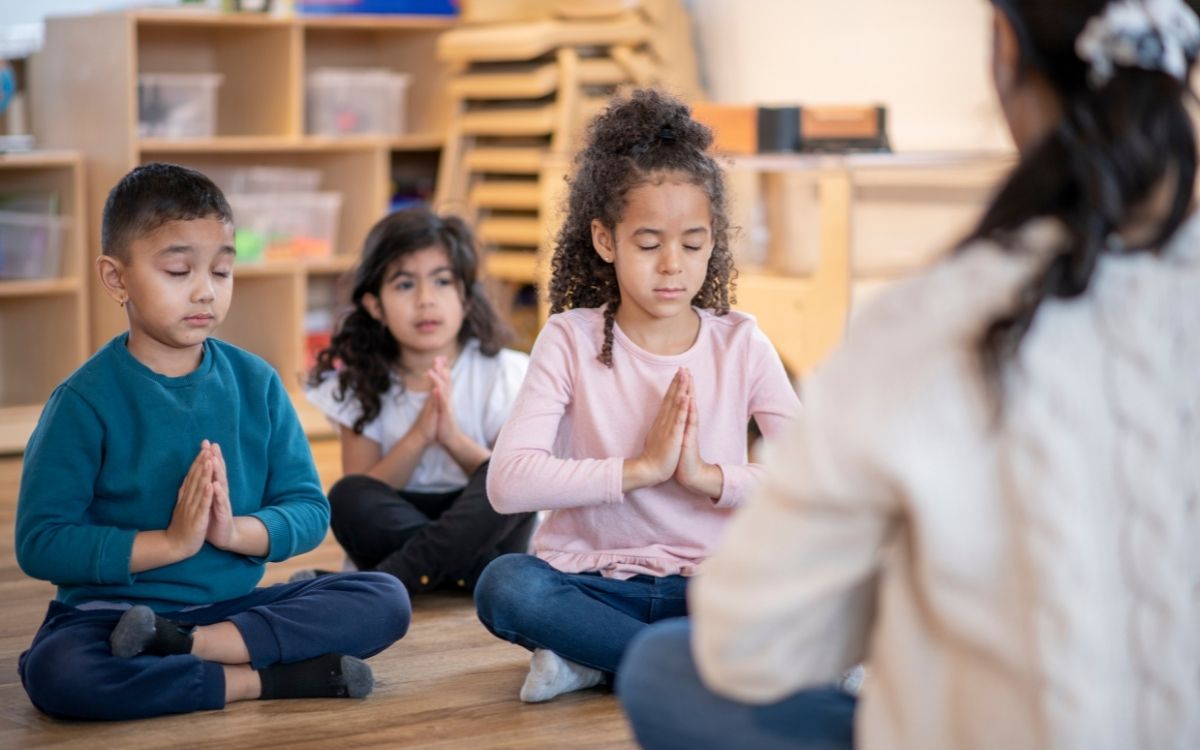If you ask a teacher what the most challenging part of their job is today, you will likely get a barrage of responses that are extremely different from the responses just three years ago. It used to be that teachers were struggling with the many distractions, such as kids checking their phones for text messages and not paying attention or the lack of respect for authority. They also listed the lack of parental involvement and problems disciplining students. But since the pandemic, things have taken a different turn. So now, with COVID-19 still a concern, what are teachers saying is the most challenging aspect of their job?
Unfortunately, teachers in some areas are struggling with the spikes of the Omicron variant and are feeling like they are barely hanging on. What they thought would be a typical school year has become disrupted once again. They have to address up to nine different academic levels in one classroom, they constantly have to figure out how to teach in an appropriate sequence with all the absences and they are not getting the support or resources they need to come up with the necessary different lessons.
It’s a struggle to determine how much new content to teach while so many students are absent and then be able to catch them up when they return, and the challenge of combining in-class learning with distance learning adds even more stress to the job.
Could the 2021-2022 School Year Be the Toughest Year Yet?

To many educators, teaching has always been a demanding job. By the end of the school year, they would enter the summer exhausted and overwhelmed. And this was before the pandemic!
Along with the coronavirus came an entirely different way of teaching. Teachers had to instantly learn to implement remote learning and hybrid learning and a whole unique set of challenges that came with the change. Then, at the end of the 2020 – 2021 schoolyear, everybody thought it would be over, and things would return to normal. However, that didn’t happen.
9 of The Most Difficult Aspects of Teaching Today
These are the things teachers say are the most difficult aspects of teaching today:
- Unexpected behavior issues. There seem to be a lot of social gaps. Kids are having to relearn how to relate to each other. There is a lot of emotional dysregulation, disruption, and disrespect for authority. Even in schools that were previously known for being calm, physical fights are breaking out.
- Starting the school year already burned out from the previous two years of pandemic living and is expected to meet the needs of kids whose lives have been completely turned around. Then, instructors are expected to teach at the same pace as well as make up for the loss. These additional stressors are on top of the usual difficulties such as piles of paperwork, standardized testing, and typical pre-pandemic problems.
- Having to help the newer young learners learn “normal” social interaction. They began their school years having to do a lot of work independently because of having to social distance or because they had to work remotely. They have missed learning a lot of healthy developmental socialization.
- Helping students who are dealing with the loss of a loved one tries to get back into the routine of learning.
- The overabundance of technology use that was necessary for remote learning makes it harder for students to disconnect. Having spent the last two and half years with their school, entertainment, work, and play all in the same place makes it difficult for kids to just pay attention to one thing.
- Being required and able to teach both online and in-person at the same time. With so many people still testing positive for the coronavirus and having to quarantine, students are randomly absent for a week or more and need to continue their education remotely. And if the students who cannot attend school in person don’t have access to the internet, teachers need to create a packet of work they can do at home.
- Struggling with the policies of wearing a mask or not wearing a mask. The struggles are not just with the school board but with the parents as well.
- Trying to abide by the social-distancing standards set by the school district while, at the same time, having 30+ students altogether in one classroom. Typical classroom routines, such as group work and materials sharing, change based on CDC and school board guidelines. Teachers need to find creative ways to bring students together yet still respect social distancing.
- Aside from the pandemic, the critical race theory being accepted or disallowed in various school districts has added an extra burden to teachers who are expected to limit what they say, teach, and what books they can have in their classroom.
How Can Teachers Overcome Some of These Obstacles?

Instructors can teach mindfulness and emotional regulation.
We all need this and can benefit from learning to recognize and handle emotions in a healthy manner. It will be especially crucial for students returning to class to devote additional time to practice mindfulness and self-regulation.
They can implement social and emotional learning (SEL) to help avoid technology dependence.
Social and emotional learning can offer students many mindful and emotional regulation methods that could help them avoid being overly immersed in things happening online and on social media. SEL involves skills such as managing and recognizing emotions, learning how to be a good friend, how to control their impulses, how to communicate effectively, and how to work with others. This is, however, a lot easier to teach with younger children who haven’t become so dependent on the overstimulation that digital media can bring.
They can support the mental health and wellness of the students.
Students have been through a lot in the last two years. Basically, they have been quarantined with the same family members and have developed all sorts of ways of dealing with stress. They will bring those ways into the classroom. It will be essential for teachers to address mental wellness with their students, especially overwhelming feelings like grief and loss. This can be done by:
-
- Teaching students to stop and take three slow deep breaths when overwhelmed.
- Introduce “color breathing” for emotions that are more intense. Teachers can do this by asking the student to think of a color that represents how they feel. Then ask them to think of a color that calms them and have them imagine breathing in their calm color as they take the deep breaths.
- Show nature videos at the end of the day to help kids calm down and relax as they transition to home.
- Practice mindfulness techniques at regular intervals, such as taking a break, looking around the room, and making a mental note of everything they can see. Or have the class get very still and for one minute have them listen and make a mental note of every sound they can hear.
- Set reasonable expectations for the kids. If a teacher knows they have missed a lot of school due to illness or a death in the family, try not to expect as much from them as they typically would do.
- Utilize the school counselors when help is needed.
Support mental health and wellness for yourself.

It can be very hard for students to regulate their emotions if they are stressed and overwhelmed. You need a break from the everyday stressors of the classroom, too. Taking advantage of class mental breaks and participating along with your students is one way to take care of yourself. Here are some others.
-
- Move your body. Get up and walk around as you teach to pump blood to your brain.
- Model self-compassion. This isn’t always easy to do, but as you practice compassion with your kids, try to think about extending the same kind of compassion to yourself.
- Set reasonable expectations for yourself. If you wouldn’t be as hard on your coworkers, don’t be so hard on yourself.
- Try to set aside some time for yourself, even if it’s just a brisk walk with your dog, coffee with a friend, or even indulging in a good book or movie.
Expect changes and learn to move through them.
If you go into each day knowing that things can change at a moment’s notice, then you are ahead of the game and will be more willing to adjust to what’s coming next.
In conclusion, there really is no set formula that will work for everyone in the same way. Some students will be able to utilize these methods in a way that will help them feel more safe and calm in an already turbulent situation, while others will not be able to sit still long enough to implement them. The best thing you, as teachers, can do is do the best with what you have and, at the end of the day, know that you gave your students your all and try not to dwell on your mistakes.
Related Articles
- What Skills Are Needed to Be a Good Teacher?
- Why Do Teachers Leave the Profession?
- What Are Some Signs Teaching Is Not for You?




